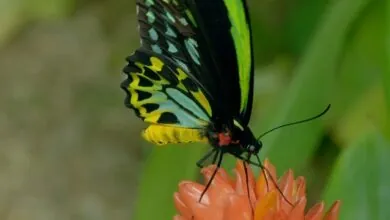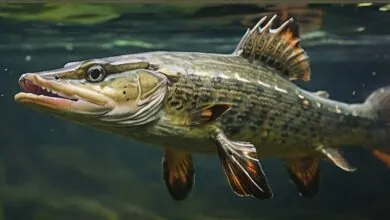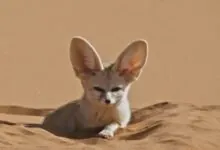Don’t Get Kissed! The Terrifying Rise of Raccoon Rabies
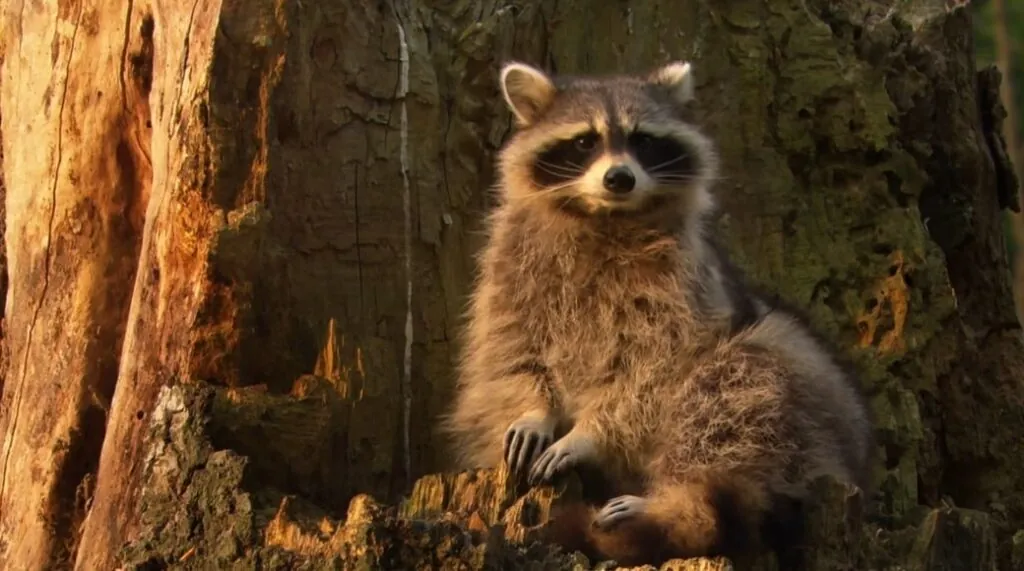
Have you ever hit upon a creature having gnashing teeth, frothing mouths and fearsome hisses? Yes, we’re spotlighting raccoon rabies, a reality that transforms these masked cuties into frothing fiends. But hey, don’t reach for the pitchforks just yet! Before diving into the truth about their scary side and the science behind raccoon rabies, let’s unfold their striking characteristics and mystical realm these creatures thrive in.
| Kingdom | Phylum | Class | Order | Family | Genus | Scientific Name | |||
| Animalia | Chordata | Mammalia | Carnivora | Procyonidae | Procyon | Procyon lotor |
Raccoons and Rabies
Raccoons – the masked bandits of the night – hold a surprising distinction; they’re the chief carrier of rabies in the US. Beneath these seemingly harmless façade of these curious creatures, this viral disease lurks.
Widespread Menace
Raccoons are accountable for over 90% of all recorded cases in the United States. This translates to around 3,300 rabid raccoons every year. In the eastern and Midwestern states, raccoon rabies is most prevalent, although pockets of infection exist throughout the country.
Raccoon Rabies: The Virus
Rabies is passed on through saliva, chiefly via bites. Any sort of scratches or contact with saliva on mucous membranes (nose, eyes, mouth) can create a hazard as well. Rabid raccoons feature unusual behavior, encompassing aggression, loss of fear, daytime activity and excessive vocalization.
The Human Angle
Owing to raccoon bites, human rabies deaths are exceptionally rare, with solely one confirmed case in the US since 1990. This is largely thanks to the accessibility of effective post-exposure prophylaxis (PEP) in case of bites.
If bitten by a raccoon, immediate medical attention is pivotal. PEP encompasses a series of rabies immune globulin injections and raccoon rabies vaccinations. Learn about raccoons, their behavior, and how to handle encounters on the Humane Society of the United States (HSUS).
Living alongside Raccoons
Raccoon rabies symptoms include walking in circles, strange or aggressive behavior, disoriented or confused appearance, prominent drooling or foaming at the mouth, leg paralysis, unusually tame and excessive, loud barking.
Raccoon rabies oral vaccines have been instrumental in controlling the spread of the virus in some regions. These vaccines are distributed through baits, identical to food items that these creatures readily consume.
Origin and Evolution
Evolutionary History
Raccoons, tracing their lineage back to 30 to 50 million years back, share a common ancestor with the mighty bears. Fossil evidence from Europe and Asia paints a picture of early procyonids identical to weasels.
Approximately, 25 million years ago, procyonids crossed the Bering Land Bridge, kicking off a journey that led to modern raccoons in the Americas. The ancestral raccoon, 6 million years ago, branched off into two lineages, leading to both North American raccoons and their Central and South American relatives.
Modern raccoons, around 4 million years ago, adapted to colder climates, venturing north from tropical regions. This was the very period which witnessed the evolution of the emblematic black facial mask – believed to boast up night vision and reduce glare.
Genetic Composition and Diversity
Raccoons have 38 chromosomes and a genome size of approximately 2.7 billion base pairs. There’re 7 recognized raccoon species, each of them is endowed with distinct genetic variations:
Environmental Adaptations
The raccoon paws – the dexterous ones – with five digits and retractable claws are masterpieces of raccoon evolution, letting them climb trees, open jars and even unlock doors! Their keen sense of smell assists them to find food sources at night. These creatures have a thick, insulating fur coat that guard them from harsh weather and let them thrive in diverse habitats, from forests to cityscapes.
Raccoon Types
The Common Raccoon (Procyon Lotor)
The common raccoons reside in North America, from Canada to Panama. They’ve prominent bandit mask, grizzled fur and a bushy tail with unique black rings. Their most distinctive feature is dexterous paws that can open jars, turn doorknobs and even solve simple puzzles!
The Cozumel Raccoon (Procyon Pygmaeus)
Speaking of the Cozumel raccoon habitat, they reside in Cozumel Island, off the coast of Mexico. They’re miniaturized version of the common raccoon, with shorter legs and a smaller tail. Currently, they’re critically endangered, with only around 500 individuals left in the wild.
The Crab-Eating Raccoon (Procyon Cancrivorus)
The crab-eating raccoon is found in Central and South America, from Costa Rice to Argentina. These creatures are identical to the common raccoon, but with a reddish cast to its fur and a shorter tail. They cherish a diet rich in crabs and other crustaceans.
Distribution and Population
Geographic Range
In North America, raccoons rule unchallenged, their natural kingdom spanning from the Canadian Yukon to the Panamanian rainforests. The common raccoon holds the crown, dominating a stretched territory including the entire eastern half of the US, most of Canada and parts of Mexico and Central America.
Astonishingly, raccoons aren’t only New World royalty; owing to human introductions, they have built thriving populations in Europe and Asia. They’ve have subdued stretched swathes of Japan, Germany and France, adapting outstandingly well to life in cities and countryside alike.
Population Dynamics
Since it’s not an easy feat to estimate the global raccoon population, but according to experts their numbers reach into the millions. In the United States alone, up to 20 million raccoons roam free, while Germany has populations between 200,000 and 400,000 masked residents.
Geography
| Continent(s) | North and South America (introduced to Europe and Asia) |
| Countries | Primarily in the United States, Canada, and Mexico. Present in parts of Central and South America, Europe, and Japan. |
| Bio-geographical Realms | Nearctic (native), Palearctic (introduced) |
| Biome | Forest, grassland, wetland, urban |
| Climate Zones | Temperate, subtropical, tropical |
Raccoon Habitat
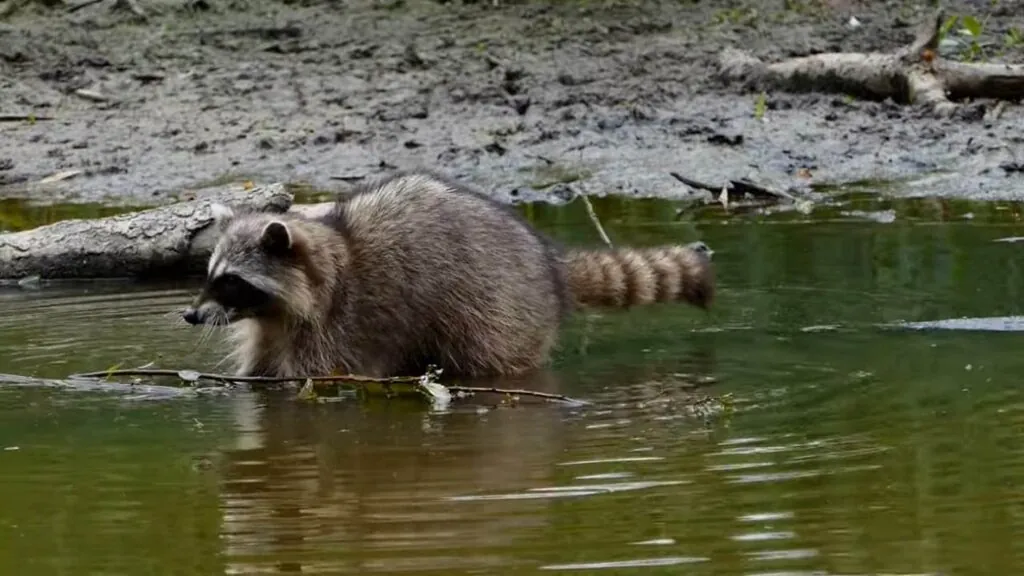
The raccoon rabies may steal the spotlight, but their habitat holds equally fascinating secrets.
Habitat Preferences
As per studies, 70% of raccoons inhabit within 0.4 km of lakes, rivers or streams. The 50% of them prefer deciduous and mixed forests but also located in coniferous forests (20%), coastal marshes (10%) and grasslands (5%).
Concerning raccoon habitat, they’re progressively prevalent in urban and suburban regions – 30% of North American raccoon population – utilizing human structures like attics, chimneys and sheds for denning and foraging. Animal Diversity Web unpacks striking insights regarding raccoon’s appearance, habitat and other notable characteristics.
The quokka, known for its perpetual smile and social demeanor, and the resourceful raccoon, renowned for its masked face and clever adaptations, showcasing charming instances of wildlife thriving in diverse ecosystems across the globe.
Habitat Utilization Patterns
In spring and summer, raccoons cover up to 2 km nightly seeking food. While in fall and winter, they’re actively confined to smaller home ranges (0.5-1 km) around den sites. They show increased reliance on cached food sources and reduced movement.
Daily Activity Patterns
Raccoons are mostly nocturnal – active at night (70% of activity), utilizing darkness for foraging and minimizing predation risk. They also show crepuscular behavior, being active at dawn and dusk (20%). Once in a blue moon, the raccoon behavior becomes inclined to daytime activity (10%), particularly in urban areas with reduced human presence.
5 Raccoon Facts
Appearance
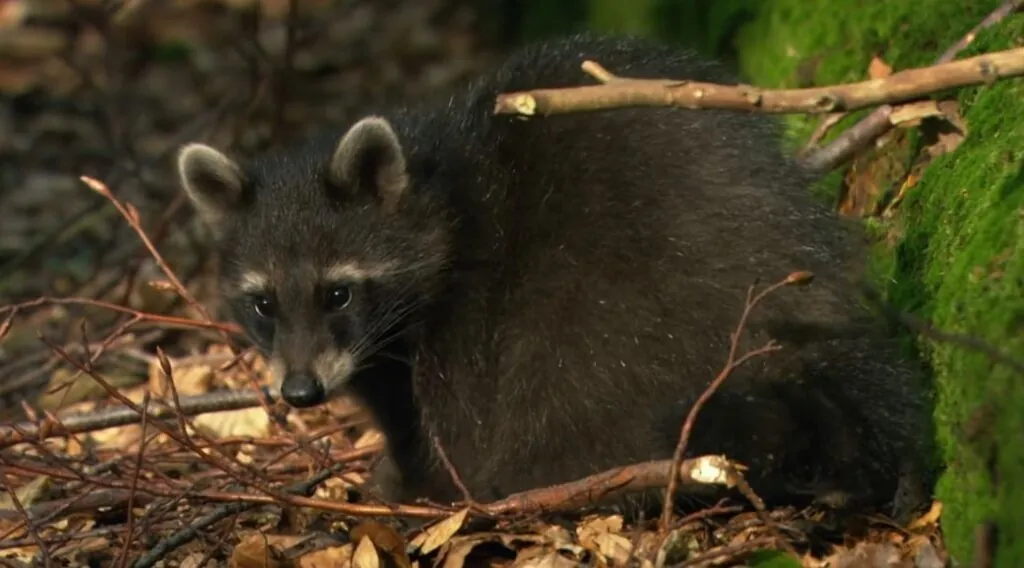
Above and beyond the raccoon rabies, the secrets of their appearance beckon further exploration.
Physical Characteristics
Size and Shape
With respect to the raccoon size, they’re medium-sized mammals, with adults normally weigh 10-20 pounds (4.5-9), with males slightly larger than females. Speaking of the raccoon shape, they’ve short legs, rounded body, and slightly arched back. Their head-body measure 23-28 inches in length; the bushy tail of them, ringed with 5-7 black bands and a white tip, measure 25-40 cm long.
Color and Markings
Raccoons boast dense fur covered by longer guard hairs, making a grizzled appearance. Speaking of the raccoon color, it ranges from grayish brown to iron-gray, with variations of silver, black and reddish-brown. The distinctive raccoon mask around the eyes extend to the cheeks and nose.
Distinctive Feature
These creatures have five-toed paws that are flexible and dexterous, identical to human hands for grasping and manipulating objects. Besides, their long, pointed claws aid in climbing and foraging. They’re also endowed with remarkable night vision, with large eyes adapted for low light conditions.
Sexual Dimorphism
In addition to the raccoon appearance, males typically are larger and heavier than females, with broader heads and thicker necks. On top of that, male raccoons possess larger canine teeth than females.
Ontogenetic Development
Juveniles born blind and deaf, covered in soft, dark fur. Their fascinating eyes open at 6 to 7 weeks and ears become functional at 9 to 10 weeks. Besides, they weaned at 8 to 12 weeks, but remain contingent upon mothers for up to 6 months.
They reach sexual maturity at 1 to 2 years old, but they may not breed until 3 years old. At this stage, their fur turns thicker and lighter and their facial mask and markings become more conspicuous.
At the age of 3 to 5 years, they become adults, whereby their coat reaches full density and color, markings become well-defined.
Anatomy
| Color(s) | Gray, brown, black, with a characteristic black mask around the eyes |
| Tongue | Long, pink, and rough, aiding in food manipulation and cleaning |
| Claws | Non-retractable, sharp for climbing and digging |
| Mouth | Small, with a pointed snout |
| Jaw | Strong, with powerful muscles for crushing and chewing |
| Teeth | 40 teeth, including canines, incisors, premolars, and molars, adapted for an omnivorous diet |
| Nose | Black, with a keen sense of smell |
| Feet | Plantigrade (walk on entire soles), with five toes on each foot, dexterous for grasping and handling objects |
Reproduction and Life Cycles
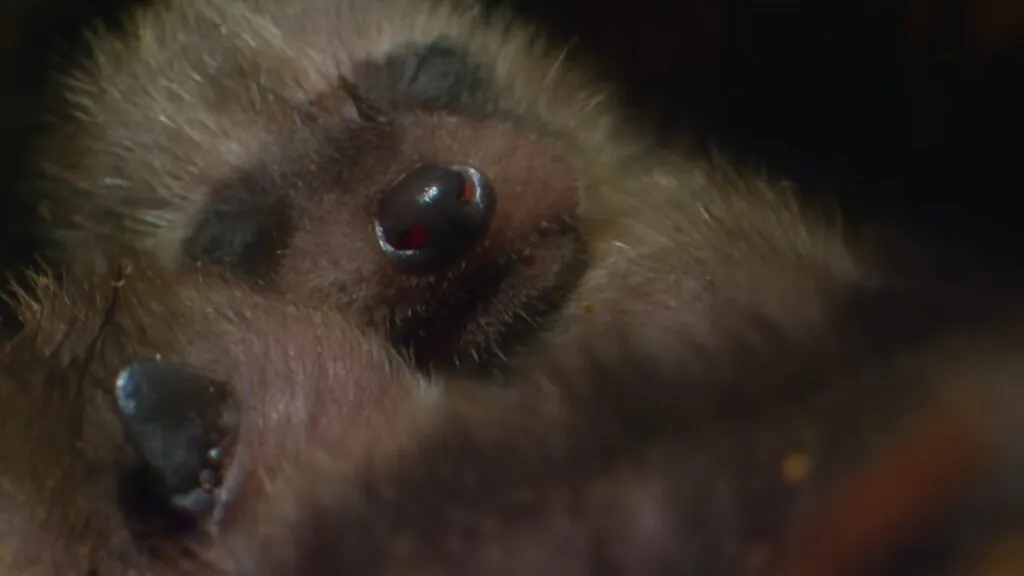
Although the raccoon rabies might take center stage, their reproduction harbors equally enchanting secrets.
Mating System
Overlook monogamy, they are masters of a diverse dating scene. The raccoons mating system encompasses polygamy, polyandry and serial monogamy (females mate with different males in successive breeding seasons, blending the elements of both polygamy and polyandry.
Reproductive Biology
Gestation Period
With respect to the raccoon gestation period, when a whirlwind romance is over, the magic occurs quickly. Raccoon pregnancies last an average of 63 days, with litters normally arriving in April or May. At the time of birth, these tiny, masked icons weigh a mere 2 to 3 ounces.
Mating Habits
| Mating Behavior | Polygamous; males compete for access to females during breeding season |
| Reproduction Season | Late winter/early spring (February-June) |
| Litter Size | 2-5 cubs, with variation depending on location and food availability |
| Gestation Period | 63-65 days |
| Baby Carrying | Female carries cubs in her den until they are 8-12 weeks old |
| Independent Age | Cubs become independent and disperse from the den around 10-12 months old |
| Female Name | Sow |
| Male Name | Boar |
| Baby Name | Kit |
Diet and Lifestyle
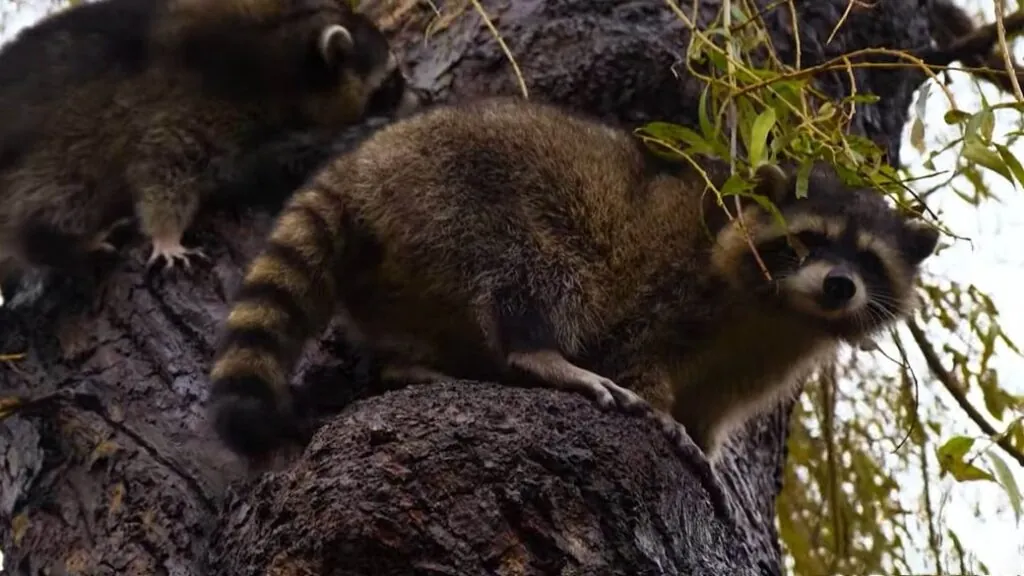
Despite the alluring nature of raccoon rabies stealing the show, their diet and lifestyle remain the treasure troves of equally fascinating secrets.
Feeding Ecology
When it comes to the raccoon diet, they’re primarily omnivores, that is, they feed on a diverse buffet of foods from both the plant and animal kingdoms. They enjoy eating fruits, vegetables, nuts and seeds, munching on berries, corn, acorns and even mushrooms.
When there’s not enough plant buffet, they switch to animal protein, hunting down insects, worms, crayfish, and frogs.
Foraging Strategies
The very nimble, five-toed hands of them, endowed with sharp claws, are effective for digging, grasping and cracking shellfish. Their sensitive whiskers function as underwater antennae.
You might have come across seeing them eating dipping food in water; it isn’t just cleanliness, but it assists them to soften food and enhance their sense of touch through their whiskers.
Diurnal Activity Patterns
Raccoons are mostly nocturnal – active at night – utilizing darkness for foraging and minimizing predation risk. Notwithstanding the fact, they can be witnessed foraging both during the day and night, particularly in urban areas.
Social Structure
Typically, raccoons are solitary creatures, except for mothers raising their kits. Nonetheless, they’re not social hermits holistically.
Raccoon as a Pet
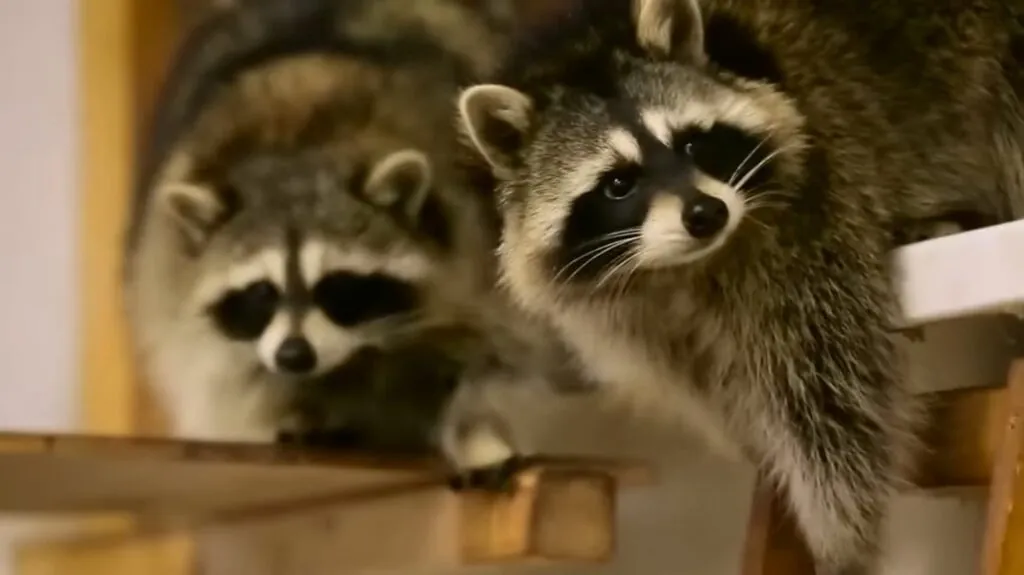
The raccoon mask and curious paws oftentimes grab the spotlight; nonetheless, before welcoming one of these lovable bandits into your home as a pet, it’s essential to digest the realities of living with a wild animal.
Raccoon Ownership
In the United States, only 5 to 10% of households own exotic pets, with raccoons being one of the less common choices just because of legal restrictions and behavioral challenges. In the states where ownership is permitted, the number of pet raccoons is approximated to be around 0.01% of the total pet population.
Nocturnal Habits
In conjunction with raccoons as pets, it’s notable that these creatures spend 70-80% of their active time at night, with peak activity taking place around 2-3 AM. This implies a pet raccoon owner can project only 20-30% of their interaction time to happen in the course of daylight hours.
Legal Restrictions and Permits
As of 2023, in the US, 38 states have some form of regulation on owning raccoons, with 19 states making it holistically illegal. Permits and specialized licenses are oftentimes required even in the states where ownership is permitted.
Health Risks
Raccoons are the carriers of a plethora of parasites, including roundworms, tapeworms, coccidia and raccoon rabies. Up to 50% of wild raccoons may be infected with at least one type of parasite. Albeit, rabies is rare in pet raccoons thanks to proper vaccination, it’s pivotal to remember that 90% of all documented rabies cases in the US involve raccoons.
Ethical Considerations
According to wildlife experts, only around 10% of pet raccoons receive ample care and enrichment to meet their intricate needs. The very statistic emphasizes the significance of holistically researching and comprehending the commitment involved before considering a raccoon as a pet.
Threats and Conservation
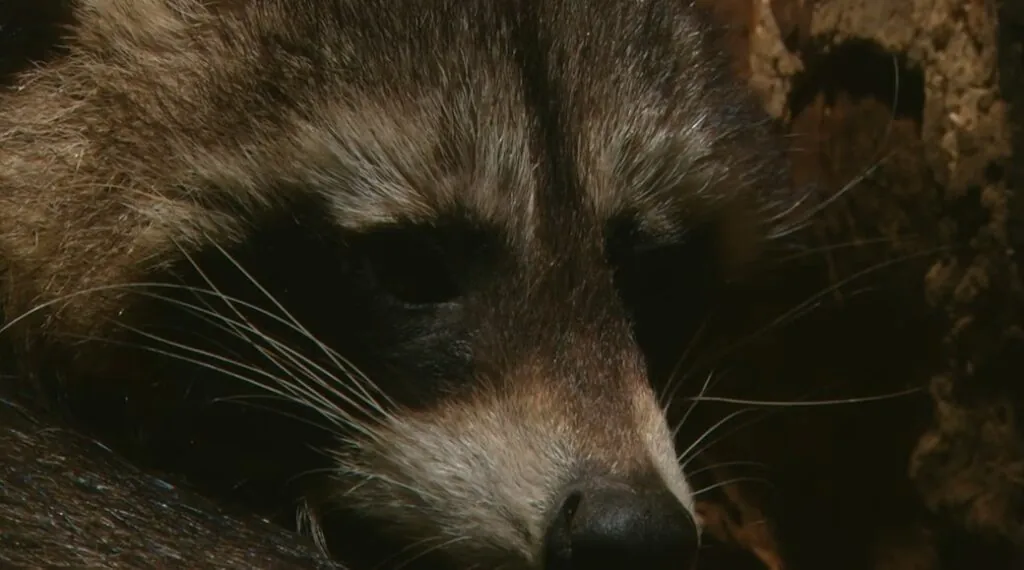
Conservation Status
Concerning the raccoon conservation status, as per the IUCN Red List, the common raccoon is typified as “Least Concern,” implying their population is stable and not contemporarily at risk of extinction.
Primary Threats
Albeit they’re enjoying the status of “Least Concern,” yet there’re some threat they encounter, including habitat loss, road mortality, disease (raccoon rabies and canine distemper), hunting and trapping, and climate change.
Relationship with Humans
Above and beyond the raccoon rabies, the secrets of their relationship with humans beckon further exploration.
Cultural Significance and Symbolism
Media and Entertainment
Economic Importance
Over the span of history, raccoon pelts were prized for their warmth and sturdiness, fueling a thriving fur trade in North America, with prices averaging around $10 per pelt.
Raccoons are traditionally hunted for their meat in some Native American cultures, offering a valuable source of protein and sustenance. Besides, in parts of Asia and Eastern Europe, their meat is regarded a delicacy, with farmed raccoons even exported from China.
Unique Characteristics
Forge a path through an intriguing journey as we unfold fascinating facts about raccoons – truly captivating animals that start with R. Join us in shedding light on their remarkable rundown!
| Common Name | Raccoon |
| Other Name(s) | Trash panda, ringtail, bandit, masked bandit |
| Number of Species | 3 (Common Raccoon, Crab-eating Raccoon, Cozumel Raccoon) |
| Population Size | Estimated at multiple millions globally |
| Lifespan | 2-5 years in the wild, up to 20 years in captivity |
| Weight | 5-26 kg (11-57 lb) |
| Length | 40-70 cm (16-28 in) |
| Top Speed | 16-20 km/h (10-12 mph) |
| Predator | Coyotes, owls, bobcats, hawks, eagles, larger snakes |
| Prey | Insects, rodents, frogs, fish, eggs, fruits, vegetables, nuts |
| Most Distinctive Feature | Black facial mask and ringed tail |
FAQs

